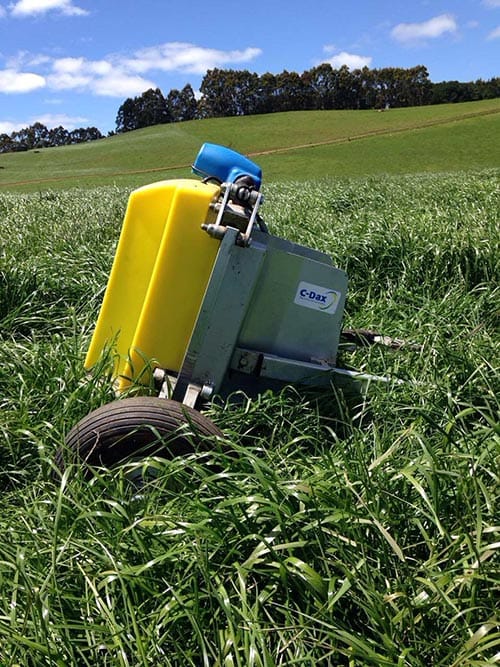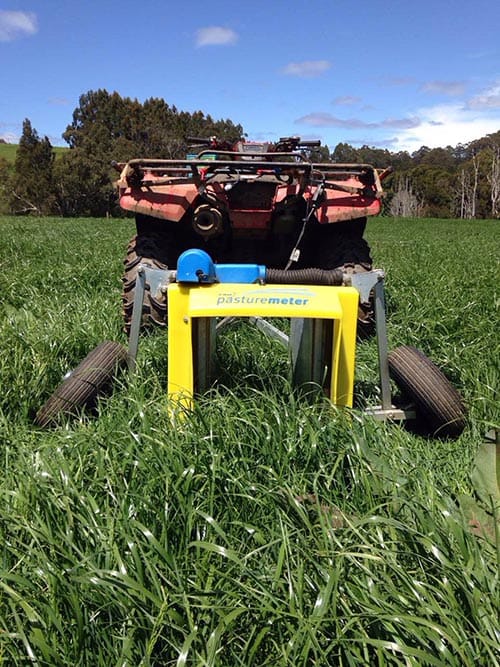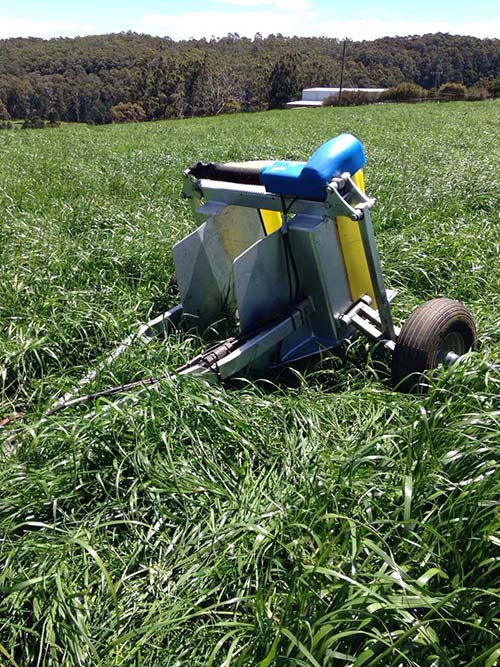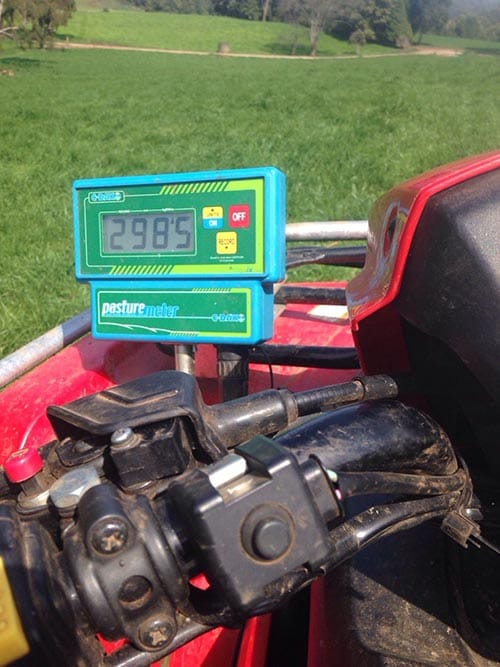Wherever you are in the world...
Imagine your pasture being measured while you're busy farming.
Select a plan today.Say goodbye to regular pasture measurements and...
Say hello to automatic updates of your feed wedge with ZERO labour.
What is a C-Dax Pasture Meter?
A C-Dax Pasture Meter, also known as a CDax is a tool used by farmers who graze. It measures the quantity of pasture in a paddock and across the farm. The measurements give an excellent indication of how much pasture is on hand and how quick the pasture growth rate is. Farmers who use a CDax can make better grazing decisions, which in turn leads to better pasture utilisation and essentially greater productivity.
How does a C-Dax Pasture Meter work?
The CDax measures the height of the pasture sward, in fact it does so at 200 measurements a second and while travelling at up to 20kms/hr across a paddock. It connects to the tow ball of an all-terrain vehicle (ATV) and is powered via the towing vehicle’s 12 volt battery.
As the CDax is dragged across the paddock, the infrared light bar detects the height of the pasture as the light beams are broken by the grass. The 200 measurements that are taken per second are averaged out over the second and then averaged out across the paddock. This then gives a biomass reading of the paddock or how much pasture is in the paddock either by height in centimetres or in kilograms of dry matter per hectare (KgDM/ha).

A C-Dax in lush grass
How accurate is a C-Dax Pasture Meter?
The CDax is much more consistent than rising plate meters when recording pasture cover levels. Again, as said in the rising plate meter page, it’s not about the accuracy that matters but more about the consistency of measuring your pasture covers. This is where the CDax beats the rising plate meter hands down with its consistency.
The CDax takes a lot of measurements across a paddock, which increases its measuring consistency. On top of that, operator technique is not as paramount if the driver of the ATV follows some simple instructions such as, maintains the same appropriate speed across the entire paddock, follows a similar path to the previous farm drive, avoids rough and uncharacteristic parts of the paddock and cleans the light bar when needed.
Ollie a co-founder of Pasture.io has used a CDax on his family farm (Robin Hill) since 2009 when he purchased one of the first ones in Tassie. This has given him a lot of experience in understanding the accuracy of the CDax and is telling by the consistent post grazing residuals they achieve. He notes that the CDax starts losing consistency in measurements over covers of 3000 KgDM/ha and this becomes more notable over 3500 KgDM/ha, when perhaps the paddock should be earmarked for silage and not grazing.
Accuracy also starts to go out the window when measuring grass in the rain or a heavy dew. This is because water, plant material and cow manure are more likely to flick up and cover the sensors. However, the latest CDax pasture meters have come a long way by utilising a plastic housing which helps stopping the infrared light bar sensors being covered. Dust can be an issue too, but not as annoying as water. If you have a lift kit on the CDax, you can always stop or check that the reading on the screen goes back to the zero reading without leaving the seat of the ATV.
The manual says that you can drive up to 20 kms/hr, but this is usually not practical on most farms and is cause for error as the CDax may spend more time in the air than on the ground measuring grass. The CDax loses accuracy when you fluctuate your speed across the paddock, as you are taking more measurements from some parts of a paddock than you are to another. The best speed is the speed you feel comfortable in holding the whole way across the paddock, considering pugging, hills, and the length of the grass with a higher pasture cover usually demanding a slower pace.

A C-Dax ready and connected to an ATV

A C-Dax in lush pasture
What are the benefits of using a C-Dax Pasture Meter?
The CDax was truly revolutionary in its time when the only other methods of measuring pasture covers were with rising plate meters, pasture probes and quadrant cuts. It still holds strong today, as a trusted grass measuring tool, especially as drones and satellite imagery are quickly catching up (look out for this technology as Pasture.io is developing it).
One of the biggest benefits asides from its consistency in pasture measuring is how much quicker and easier it is over that of a rising plate meter. Operator fatigue has certainly been removed, for example, instead of spending six hours walking your farm of 150 hectares, it can now take you between two and three hours with a CDax driving your farm.
Being a farmer, means you’re connected to the land, which is a big benefit of using a CDax. It essentially means that once a week you or an employee will travel across every paddock on the farm taking note of the movement in pasture growth and jobs such as fencing or irrigation that needs repairing.

An old C-Dax computer with KgDM/ha reading
Further C-Dax Pasture Meter information
In this video, Tom from TDRF provides a brief overview on the function of the C-Dax Pasture Meter. The TDRF have been using the CDax for a few years now and are achieving good results with their pasture management.
Video published by Dairy Australia interviewing Duncan McDonald about the C-Dax Pasture Meter
"The C-Dax pasture meter is an electronic device that can help you measure pasture height and estimate pasture mass over your entire farm in just a few hours."
What are your experiences?
We'd love to hear your feedback, or if you have some great tips that we can share in the post above - please feel free to get in touch or leave a comment below.
